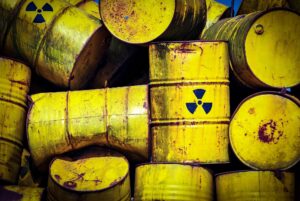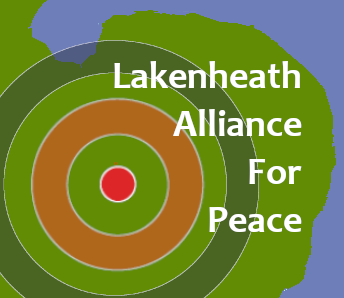
Between 1946 and 1993, several countries dumped their nuclear waste into the sea. This even included high-level radioactive waste, before a ban in 1975.
Worldwide, there is only one final high-level nuclear waste repository under construction – in Onkalo, Finland. Meanwhile, more than 350,000 tonnes of high-level radioactive waste has already been generated globally and this number increases by another 10,000 tonnes each year.
The US demonstrated very early on how to quickly and cost-effectively dispose of nuclear waste: In 1946, the US put radioactive waste in 200-litre barrels and dumped them into the Pacific Ocean. As a result, the ocean became a nuclear waste dump. Decades later, the US government admitted to the International Atomic Energy Agency (IAEA) that up until 1970, the country had disposed of 90,000 barrels at different locations in the Pacific and the North Atlantic.
After the fall of the Iron Curtain, the Russian Federation admitted to the IAEA that in Soviet times, around 1,900,000 cubic meters of nuclear waste disappeared into the Arctic Sea and almost 150,000 cubic meters went into the Pacific Ocean and the Baltic Sea – among them disused nuclear submarines and at least 16 nuclear reactors from submarines.
Six nuclear submarines (three from the US and three from the USSR) sank, complete with nuclear missiles on board. The boats are still lying at the bottom of the ocean, at a depth of between 1,700 and 5,500 meters
A statistic, published by the IAEA in the 1990s, shows that a number of other countries followed the US example: Belgium, Switzerland, France, Sweden, the Netherlands, Italy, Germany and most notably the UK, abused the Atlantic Ocean as a final nuclear dumpsite and collectively disposed of more than 100,000 tonnes of radioactive waste.
However, highly publicized protests by Greenpeace finally brought about a change in approach. In 1994, all countries that had previously used the oceans as a nuclear waste dump signed a moratorium that still stands today.
Nuclear Free Future Foundation: Waste II Destination Unknown
The first nuclear chain reaction took place in Chicago on December 2, 1942, as part of the Manhattan Project. On that fateful day, the first cupful of high-level radioactive waste was produced – for eternity. No plan was made then to dispose of this new type of waste. It was a problem to be solved later. Now it is “later” and there remains no permanent, safe, long-term solution for its disposal.
In the UK the Lake District National Park in Cumbria remains the favoured site for a radioactive waste repository, although it has been strongly opposed, largely because the area is geologically fragile. When the UK’s 15 nuclear reactors are all finally decommissioned there will be at least 4.77 million cubic meters of radioactive waste to dispose of – mostly high- and intermediate-level.
High-level radioactive nuclear waste is currently stored above ground at several locations, most of it at the reprocessing plant in Sellafield.
Nuclear Free Future Foundation: Final Disposal Site – The Oceans
